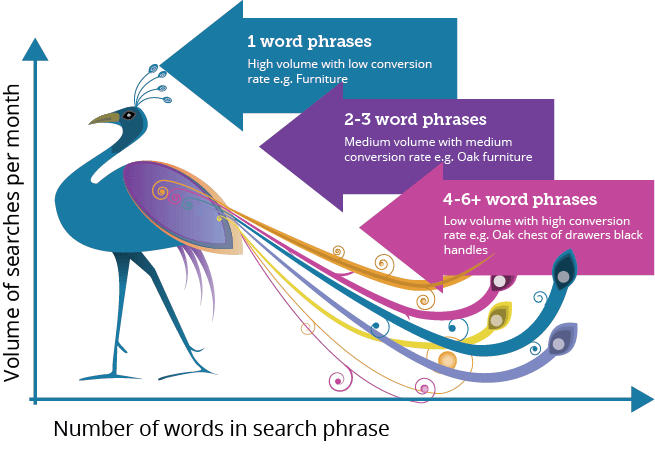Why You Shouldn’t Always Worry About Traffic Decreasing
When you look into analytics or at your digital marketing report and see that traffic line graph dipping down, most people are conditioned to instantly think – something bad is happening! However, for most types of websites a dip in website traffic is not always a bad thing. For websites which rely on high volumes of traffic for advertising like publishers, a dip in traffic will always spell trouble but for eCommerce websites and lead generation websites the story might not be as it first appears.
Image source: https://pixabay.com/en/talk-to-me-talking-to-me-hello-993309/
Should traffic be a Key Performance Indicator (KPI)?
Before starting any marketing campaign, your brand needs to be clear on what the desired goals are for that marketing campaign and budget. When you’re setting these goals they should of course link back to wider business objectives. When deciding what metrics will reflect these goals, you should choose carefully.
Some metrics are known as “vanity metrics”, this label refers to metrics which might make you feel good or look nice but don’t actually help you make business decisions or help you reach your business goals.
You have to ask yourself when is website traffic a vanity metric or more of a nice to have? If your business goals include the following then traffic might not be a KPI:
- Increasing revenue
- Increasing digital marketing ROI
That being said, it’s all too easy to see why you might be concerned traffic is down.
Does traffic going down mean less brand awareness?
There’s no denying the power of brand and its influence with consumers in making purchase decisions. So when traffic dips, many marketers begin to worry about the impact on brand reach. A dip in traffic will mean that less people are experiencing your brand, particularly if organic and unbranded traffic is down, you may worry that fewer new customers are finding your brand.
Traffic may be down but other metrics which indicate user engagement on your site might be up such as time on page, pages viewed and of course things like conversion rate, email sign ups and most importantly, sales. Whilst it’s true your brand is reaching less people, if these aforementioned metrics are the same or up, then your website is getting a higher percentage of engaged visitors which are more likely to be your target audience.
This could be more useful from a brand awareness point of view if you consider the power of brand advocacy.
Image source: https://pixabay.com/en/party-celebrate-drink-funny-frogs-1235308/
Would you rather have 200 acquaintances or 20 friends?
What’s worth more to your brand, 200 people coming across the web page that don’t like your products enough or don’t have an immediate need to purchase, maybe intending to come back, or not really being interested and leaving, OR 20 people who arrive at your site to see products they love or need (or love and need) and go on to purchase? Which set of people do you think is more likely to talk about/post on social media/recommend to their friends/come back to purchase when they next have a need? Probably the people who have a tangible experience with your brand and have already become a customer! My point isn’t that the 200 people who come across your brand are worthless, but that the 20 buyers have much more value to your brand especially when you include customer lifetime value and brand advocacy.
Does traffic decreasing mean digital marketing isn’t working?
This all comes back to goals. The money spent on marketing should be seen as an investment to meet your business goals. If you don’t know what those goals are then it’s pretty difficult to tell if your marketing has been successful. For most eCommerce brands the number 1 goal is typically to increase website revenue.
A large part of refining the performance of digital marketing campaigns is to increase the targeting of campaigns so you are attracting your target audience. Most people would agree with this statement and yet an inherent outcome of this is often a fall in traffic as you begin to send only relevant visitors to the website with the intent to buy. Through search engines, this approach centres around targeting keywords where the customer is searching with an intent to buy. This buying intent is reflected by the specific and “long tail” nature of the keyword indicating that they are not at the research stage but ready to buy then and there.
Ultimately this approach focuses your budget on revenue growth. New customers becoming returning customers will grow your business faster than focusing on brand awareness immediately and hoping these consumers later become customers.
Key Takeaways
Sometimes you can’t have everything and sometimes you don’t need everything! The key takeaways to consider when traffic is down:
- Decide on your key performance indicators that reflect business goals and marketing success, should traffic targets be in place?
- If you think more traffic equates to more brand awareness, think about introducing your brand to browsers versus introducing your brand to customers as the difference between making a new acquaintance versus making a new friend. An acquaintance may turn into a friend one day, but a friend knows you, trusts you and wouldn’t hesitate to recommend you.
- How are other engagement metrics and most importantly revenue performing? Looking at year on year measurements are always the best indicators of success.
Thank for reading
Follow my contributions to the blog to find out more about digital marketing strategy or sign up to the ThoughtShift Guest List, our monthly email, to keep up-to-date on all our blogposts, guides and events.



